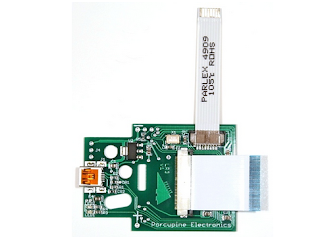The only change we made to the control system was to fix the PI code to so it would update every cycle instead of every 4th or 5th as it was doing last test. The hops were not by any means perfect but the part of Bart's control system we were testing (inner velocity loop), worked well resisting rotation and we were all satisfied with the results. The main problem we were having is that when warming up the thrusters with a quick pulse before a test (they cool down quickly) the vehicle would start rocketing and so would usually have some sideways velocity which caused the vehicle to drift sideways during hovers. The other problem was that it is difficult to control the throttle manually so the vehicle would usually not have enough thrust or shoot up.
Here is the log of Roll angle, Rate and PI output for a 2.6 second hover:
As can be seen roll angle started at close to 0 and stayed within +- 0.8 Radians. I havent talked to bart since the test but I at-least am really happy with the performance considering that the system doesn't take the actual angle into consideration and only reacts once the vehicle has started to fall over so will naturally oscillate somewhat. The other thing is that Ki and Kp constants were calculated assuming 4L of peroxide and we only started with 1.5 so the system will want to under and overshoot. The changing system properties is something we need to start thinking about how to address. Next step is to add in the position loop.
We are somewhat divided on where to focus now. I think we should work on getting the altitude loop working with the laser rangefinder so we can maintain a level hover. A thought that we should work on getting absolute position so we can eliminate the sideways drift issue which would enable us to more easily refine the stabilisation system. His argument was that we already have a functioning rocket and we could dead-recon to get position for short periods if we started from stationary so why add something new. A also thought of a good idea which was starting on chocks which would fall away as soon as we take off. This would allow us to warm up the thrusters without starting the vehicle rocketing on its tether. It could also give us a fixed reference to start dead-reckoning from.
I recorded the first test in high speed at 400fps. It was really cool to see the vehicle fighting the tether in slow motion and you can see the vehicle making individual corrections and oscillating. It will take a while to edit as its really long in real time but when I get some time I will upload it. The unedited second test is on youtube here if anyone wants to see it.
After the test we were discussing future work and decided that it would be good (and useful) have a long term goal/challenge to work towards. One idea Marco/A came up with was to be able to drop the rocket from a height and have it stabilise itself and land automatically. The current vehicle probably wouldn't have enough power to recover from a high height (maybe 20m) but wewould start by knocking it off the top of the test stand. We would probably need a positive displacement tank otherwise pressurisation gas would get in the thrusters when it falls over. We would also need a better IMU as the Arduimu goes crazy at large angles.
I am not sure if we will be able to test again this weekend as I have to go to a first aid course all day Saturday and have some uni work to catch up on so we will probally test the following Sunday.










